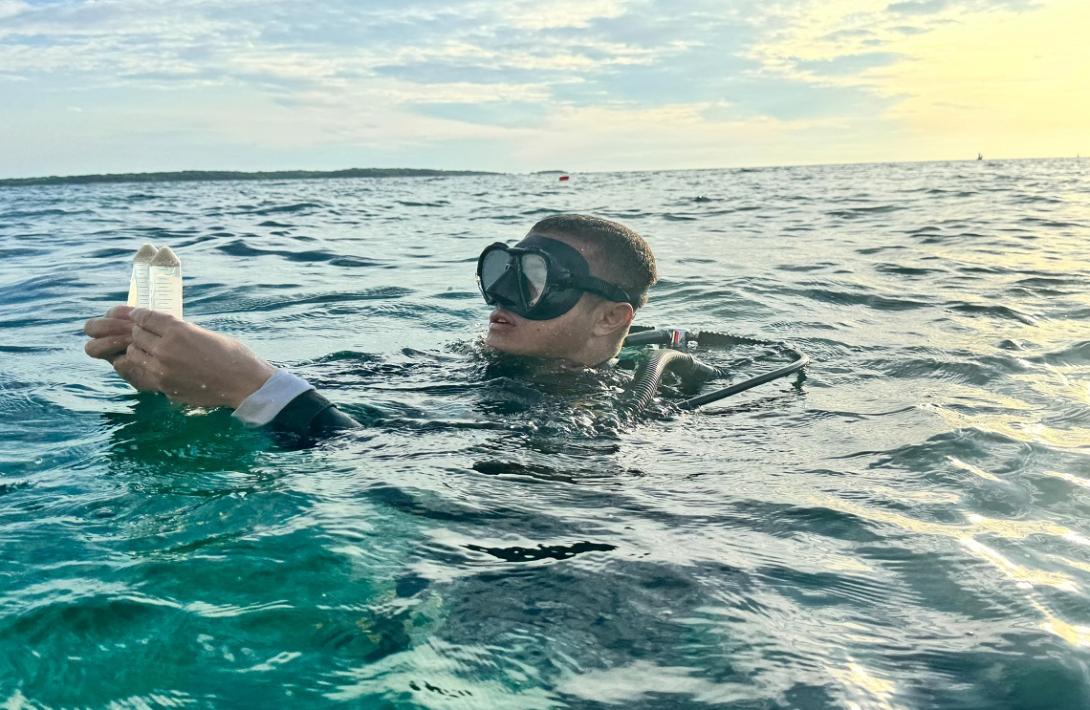The activity focused on the collection of coral gametes.
Gametes are millimeter-sized sacs containing eggs and sperm of the same coral specimen that, when broken, become fertilized and reproduce, to become sources of life and natural barriers against coastal erosion and storms.
In an activity led by the San Martín de Pajares – CEINER Research, Education and Recreation Center, in coordination with the Los Corales del Rosario and San Bernardo National Natural Park, divers of the Colombian Navy collected coral gametes that inhabit the insular region of Cartagena.
The activity that was carried out in Isla Grande, in the vicinity of the Rosario Islands aquarium, had as protagonists the CEINER researchers, who established that the corals of the Diploria labyrinthiformis specimen, commonly known as brain coral, would begin their reproductive process with the release of gametes, which are collected by the researchers for subsequent fertilization and cultivation in laboratory, a space in which they have an environment of ideal temperature and salinity, it works by raising a higher percentage of success in the fertilization process.
It should be noted that these ecosystems are not only a source of biodiversity, but in the same way act as natural barriers against coastal erosion and storms, protecting island communities of their effects. Additionally, corals support fishing and tourism, fundamental activities for the economy of Cartagena and the Caribbean region in general, so the degradation of these ecosystems threatens not only the ecological balance, but in the same way the livelihood and security of the inhabitants.
The Colombian Navy, through the Caribbean Naval Force and its Diving School, ratifies the commitment to the protection of ecosystems in the Caribbean region, in the same way invites people to protect the country's maritime environments and to denounce any situation that puts our fauna and flora at risk.
Source: Press - Navy of Colombia





